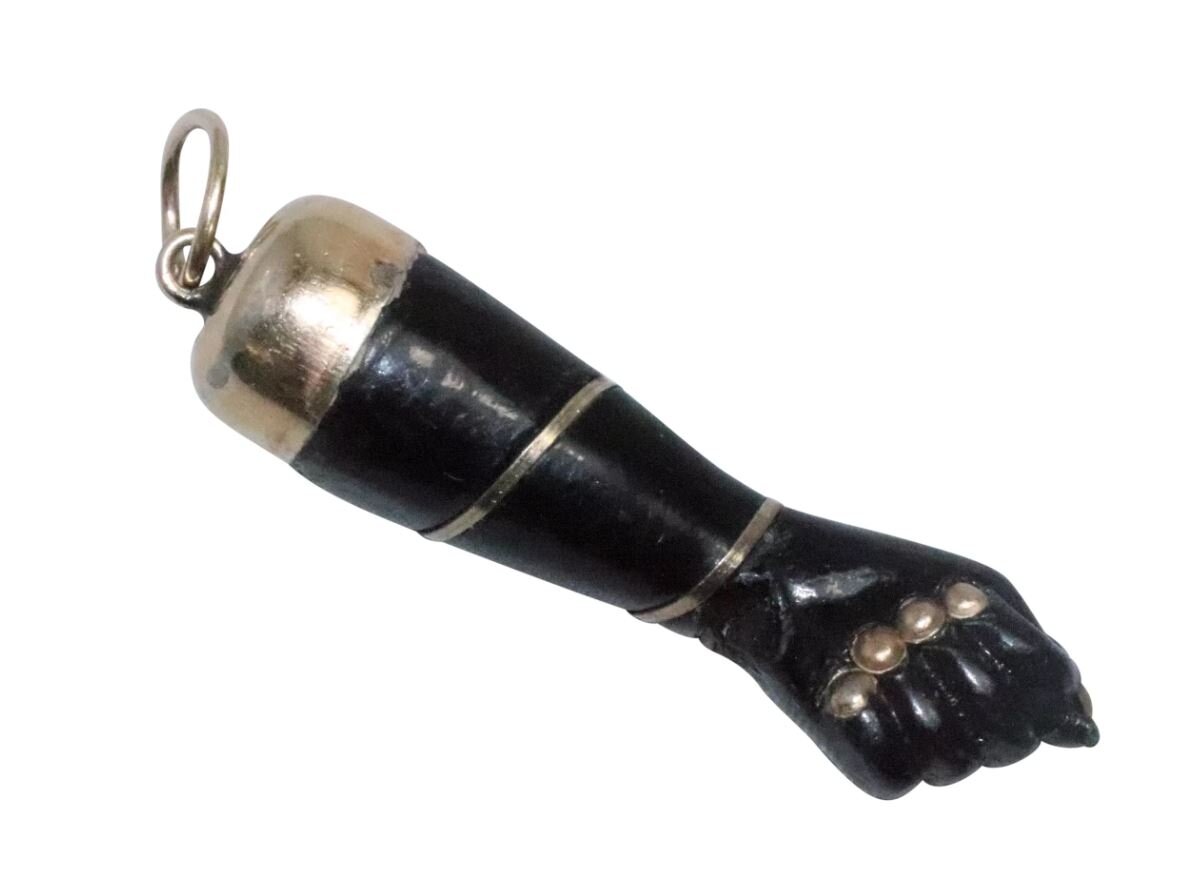Hand Amulets: Mano a Mano a Mano…
Discover the Magic of Hand Amulets: Ancient Symbols of Protection and Good Fortune
Hand amulets have been cherished across cultures for centuries, serving as powerful symbols of protection, luck, and spiritual connection. From the hamsa hand in Middle Eastern traditions to the mano figa in Mediterranean culture, these mystical charms are believed to ward off evil and bring blessings to their wearers. Join us as we explore the fascinating history, cultural significance, and modern-day uses of these enchanting talismans. Whether you’re a seasoned collector or a curious newcomer, there’s always something magical to uncover in the world of hand amulets.
An amulet is an object that has a protective, or apotropaic, purpose. Using hands as amulets is an ancient practice. Let us explore some of the different hand amulets that have been used to protect against evil over the last few thousand years.
Mano Pantea — The mano pantea is wild. Translating roughly to “pantheistic hand,” this amulet is a maximalist’s dream. It’s like someone said, “If frogs and turtles and scarabs and serpents and bells and pine cones all individually have protective qualities, what if we stuck them all together and put them on a hand???”
In the mano pantea, the hand itself faces upright and the fingers are in the position of “sacerdotal benediction”: first two fingers and thumb extended. The hand is covered on both sides with an assortment of amulets, each of which has a specific symbolic meaning and all of which possess protective qualities against the evil eye.
Each hand has a different collection of amulets, but common ornaments include: a semi-circular frame in which a woman nursing a child is depicted; a bird; a whip; a scarab; a frog; serpents; a caduceus two-handled vase; crocodile; weighing scales; a tortoise; a pine cone; a fig tree; a bee; a knife; a distaff; a strigil; a horseshoe-like figure with rings at the ends; bells; cymbals and representations of various figures.
Importantly, the mano pantea was used as an amulet — not as a votive, meaning that is was meant to be kept and displayed, not given as a spiritual offering.
It’s a lot to unpack. The House recommends The Evil Eye by Frederick Thomas Elworthy to those seeking a deeper understanding.
Mano Cornuta — (Horned Hand, variant of Corno, Cornuto & Cornicello ) The mano cornuta is a hand gesture used as an act of reproach and a potent symbol against the evil eye. When the mano cornuta is intended to avert the evil eye, the “horned hand” gesture is pointed toward the person with either hand and accompanied by saying or silently mouthing: “horn, horn, horn” or “cornuta, cornuta, cornuta,” if you prefer. When the horned hand is raised vertically toward one’s own forehead, it represents the “exalted horns.” When it is pointed toward the chin, it implies conjugal infidelity to the husband, branding him Cornuto (“horned”) — an insult of being a “cuckold” (or as the kids say today, a “cuck)” a reference to the cuckoo bird’s habit of laying its eggs in another bird’s nest. More on that here. Those seeking a deeper exploration of the horned hand and its connection to the evil eye are invited to read more here.
To make the gesture properly, the thumb is folded over the middle and ring fingers. With thumb extended, it is the sign for “I Love You” in ASL.
Mano Figa (aka Manofica, Mano Fica) — The mano figa (fig hand) dating back to ancient Etruscan Italy (at least). It is an obscene sexual gesture that is used to protect against — you guessed it— the evil eye! Figa means “fig” in Italian, and figa is a slang term for female genitalia, due to the alleged resemblance to the fruit. In the upward direction, it is a gesture of defiance, similar to “up yours.” In the downward direction, the mano figa takes on a phallic property and becomes a representation of the all-powerful protective horn. When using this gesture, say, “May the evil eye do no harm.”
You will sometimes see a closed hand or a fist described as a “mano figa” but it is technically not a figa unless the thumb is inserted between the index and middle finger.
There is one contemporary artist who makes the most magnificent, beautiful lampwork figas, and The House strongly encourages you to check out her work. The mano figa is also a common element of a Brazilian amulet called the penca de balangandan.
Azabache — The azabache is a Latin-Caribbean charm against the evil eye. Made of a black, semi-precious material called jet (or sometimes “black amber” because it is actually a form of fossilized tree resin), the azabache is either carved into a round bead or into the shape of a hand (mano de azabache), worn with red cord as a necklace or bracelet.
Charms and bracelets made of azabache are popular with Christian pilgrims along the road to Santiago de Compostela because many Spaniards believe the stone brings good fortune and protects from evil. Its use in Santiago has been traced back to the 11th century, and today pilgrims in Santiago can find a vast selection of jewelry made of azabache from Asturias.
The azabache is frequently used as a charm of protection for babies in Latin-Caribbean communities.
Hamsa (aka khamsa, Hand of Fatima or Hand of Miriam) — The Hamsa is an amulet against the evil eye in Christian, Muslim and Jewish culture. The“hamsa” (literally 'five' in Arabic) is a hand with five outstretched fingers and an eye in the center of the palm.
Why does the hand have two thumbs? The House promises to research that point, but for now the answer is “symmetry.”
Should the hand face up or down? It depends on what you desire. Facing up, it has apotropaic properties, meaning that it protects against evil. Facing down, it invites abundance, fertility and answers to your prayers. This blog post does a great job of explaining the origins and meaning of the hamsa.
Mano Poderosa — The House of Good Fortune views the Mano Poderosa (powerful hand) as God’s family photo. The image depicts of the right hand of God with all five fingers extended. Atop each finger is a person: St. Joseph and the Virgin Mary, (Jesus’ parents) and St. Joachim and St. Anne (Jesus’ maternal grandparents). Baby Jesus is usually (but not always) depicted as seated — where else?— on God’s thumb.
The palm faces outward — toward the viewer — and has a stigmatum. In some versions, blood drips from the wound into a chalice from which seven lambs drink. (When it comes to religious imagery, Catholics really are in a league of their own.)
Popular in Mexico, this image is placed on candles, soap and other products sold in botanicas, where it is called the “helping hand” and is said to give direction, strength and guidance.
The mano poderosa is not a “good luck charm” or amulet in the same way the others are, but The House of Good Fortune has chosen to include it here because of its role in Latin American spiritual remedies and folk Catholicism.
Hand of Glory — Last but not least, the Hand of Glory is the preserved hand of a man that has been hanged. Various grimoires explain that the best way to pickle a hand is in an earthenware jar with salt, saltpeter and long peppers. The hand is then placed in the sun or in an oven to dry. Thus prepared, hands of glory can be used to hold candles rendered from dead men’s fat, and while the hand is being used in this manner, it is said to have magickal properties.
And for those who are still curious about hands, pop over to The Bonheur Blog, where you can read about the “Vulcan Salute” and compare the use of gestures of benediction in Judaism and Christianity.
Gallery of Hand Amulets
An ornate lucky charm in the form of a hand. Chromolithograph. Credit: Wellcome Collection. Attribution 4.0 International (CC BY 4.0)

George Arents Collection, The New York Public Library. The Crescent and Hand.
Manofica coral gesture set in silver, Verona, Italy, 1850-19. Credit: Science Museum, London. Attribution 4.0 International (CC BY 4.0)


Hand of Fatima, Porte Bonheur

Mano Pantea

House of Good Fortune Collection of Wooden Hands
La Mano Poderosa, Mexico, Museum Expedition 1944, Purchased with funds given by the Estate of Warren S.M. Mead
The Evil Eye By Frederick Thomas Elworthy

George Arents Collection, The New York Public Library. The Crescent and Hand.
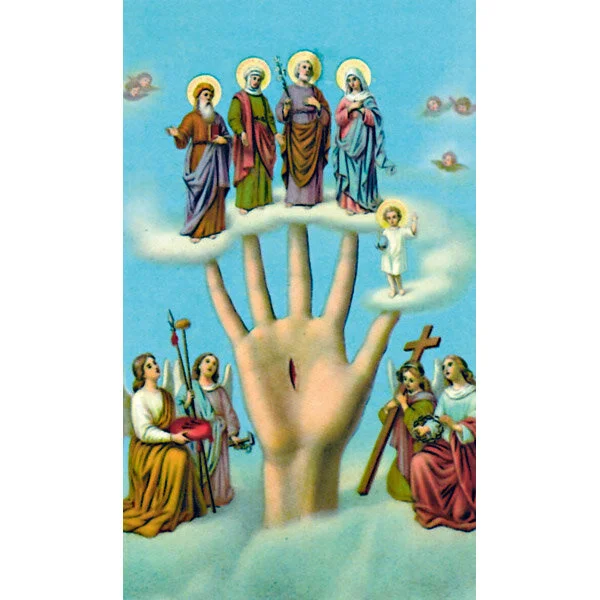
La Mano Poderosa

House of Good Fortune Collection, Mano Figa
Hand of Glory
Figa Brooch by Alexander Calder
Hamsa Amulet c. 1920
Anatomical Votive Hand, © The Trustees of the British Museum


Silver Hand of Fatima Talisman studded with precious stones, from the Collection of the Penn Museum.
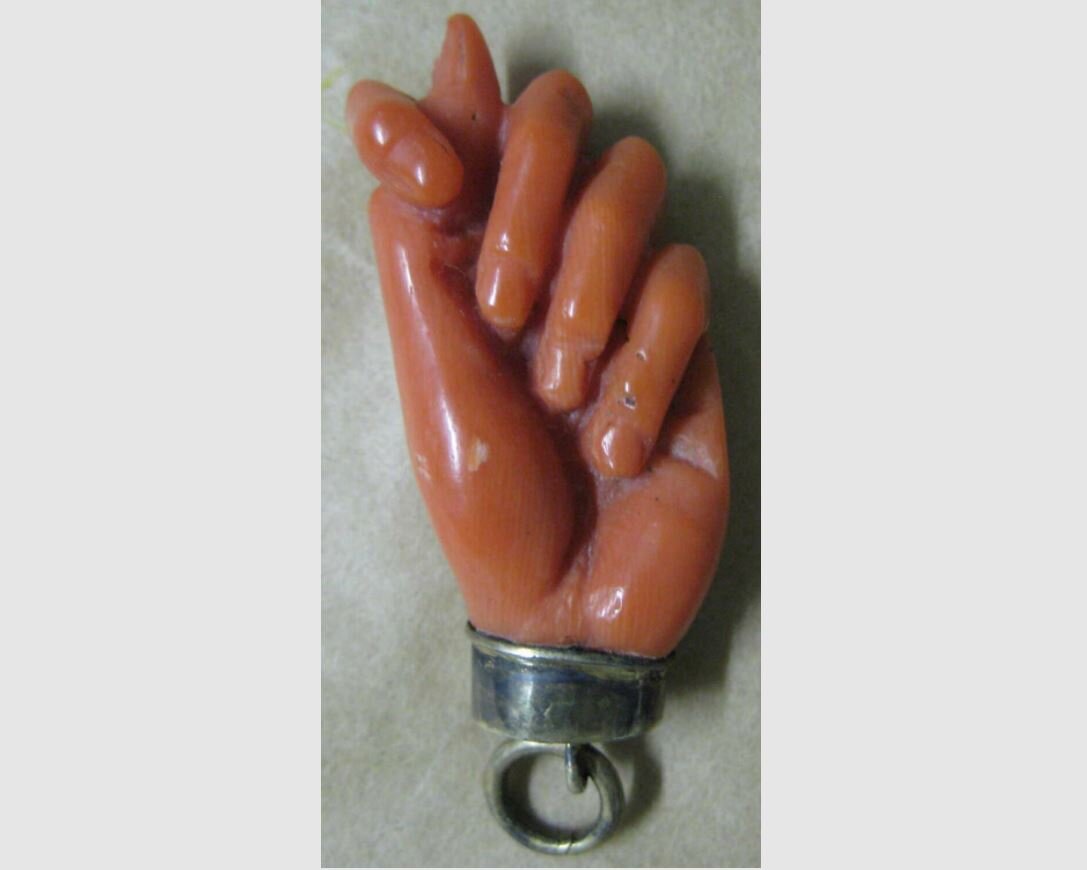
Coral Mano Figa, Louvre Museum
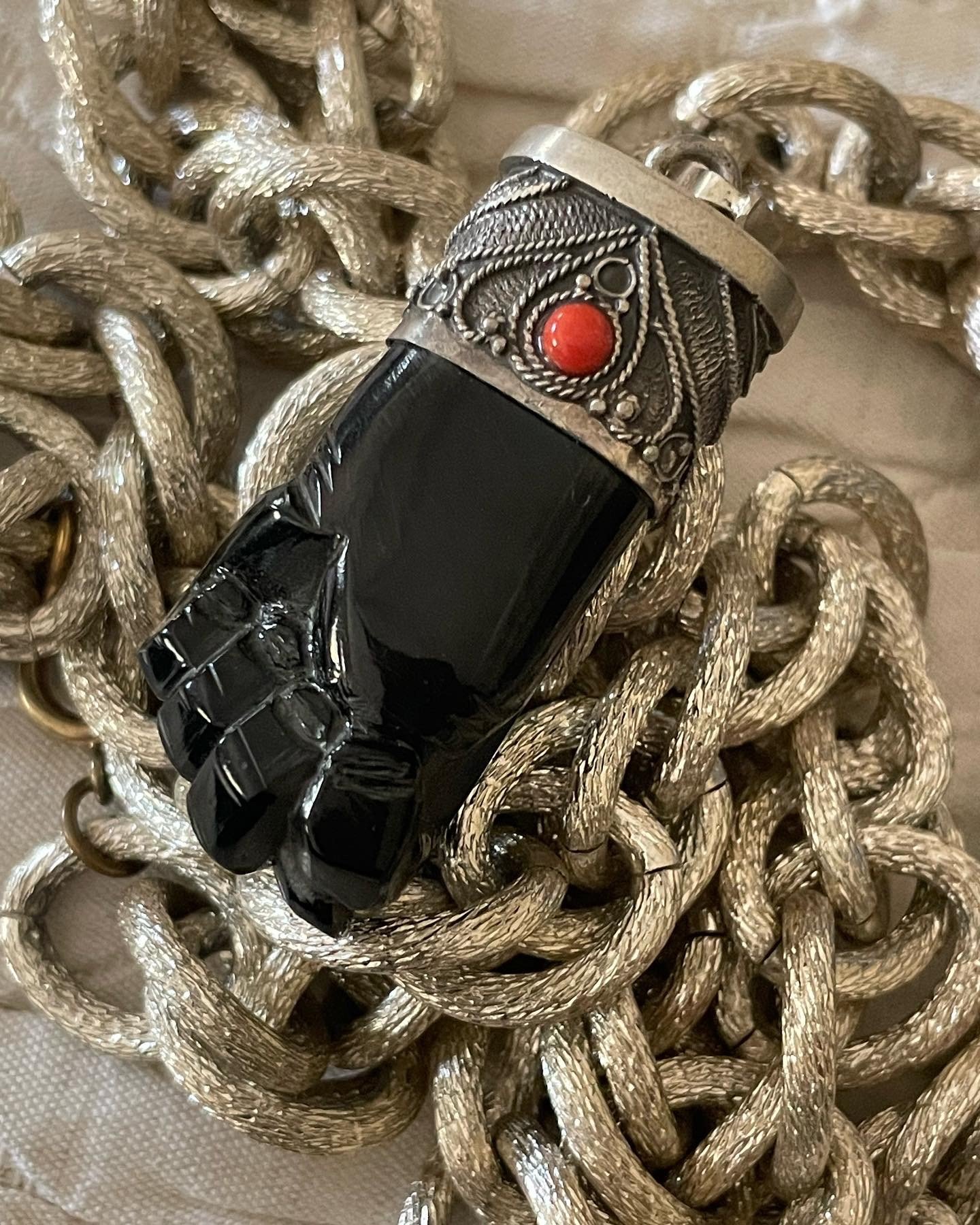
Chunky hand-carved mano figa charm made of azabache, silver and coral. From Rod Mayer in Santiago, Spain. House of Good Fortune Collection.

Barallada Cards featuring La Mano Figa, House of Good Fortune Collection
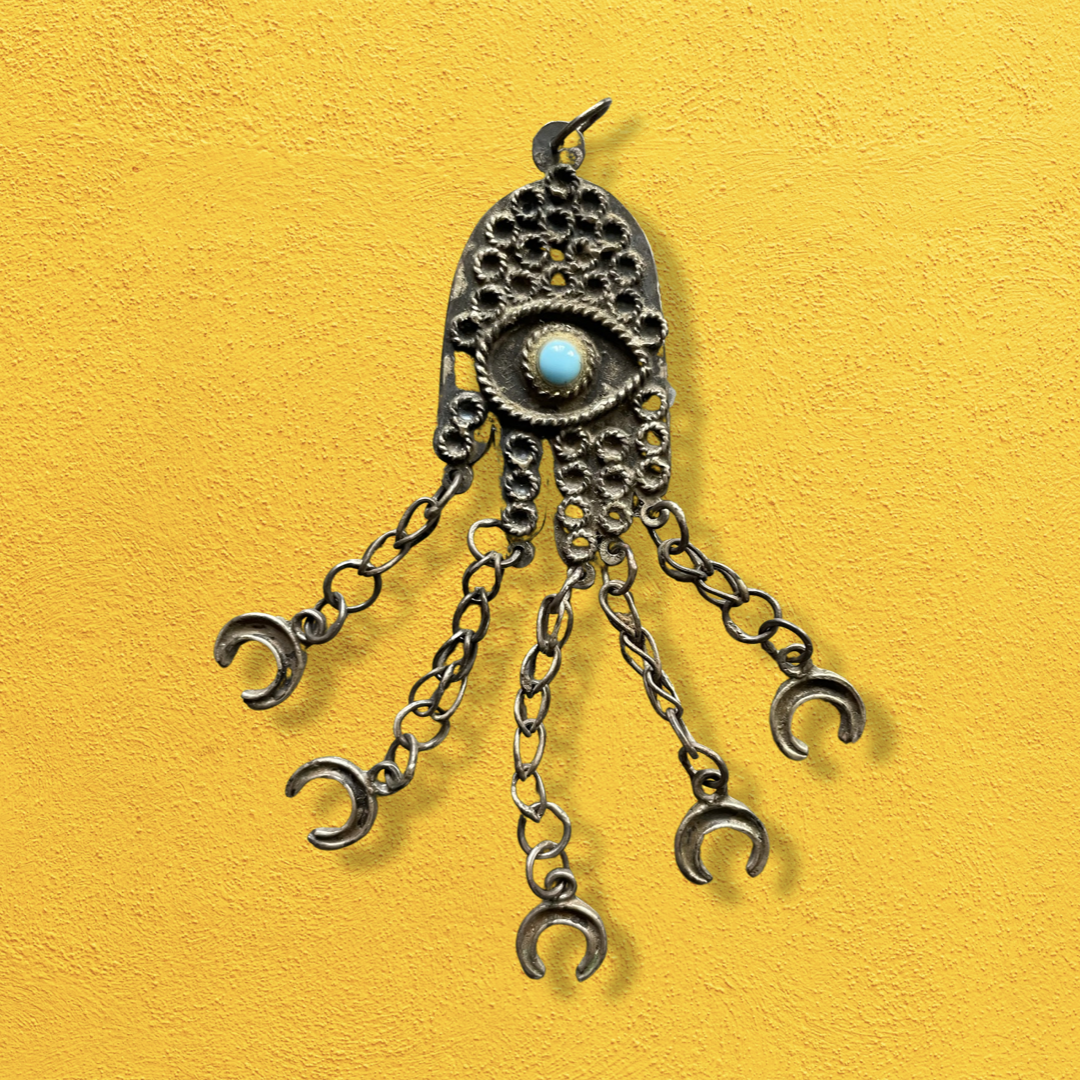
Hamsa with Hanging Crescents; House of Good Fortune Collection

Large Wooden Mano Figa; Brazil; House of Good Fortune Collection

Contemporary Khamsa Wall Hanging; Egypt; House of Good Fortune Collection







